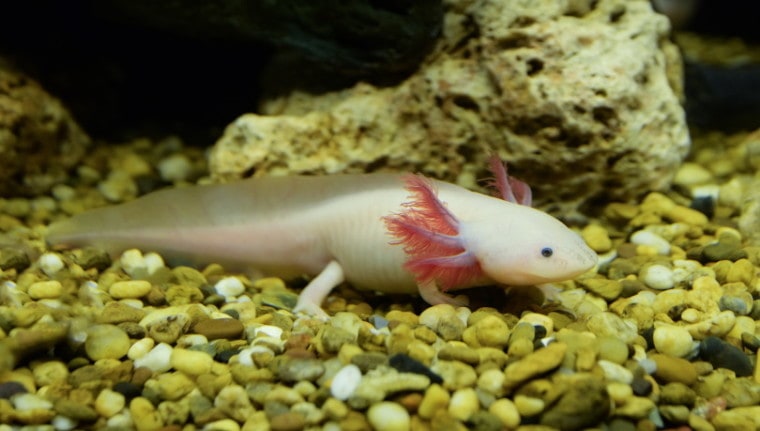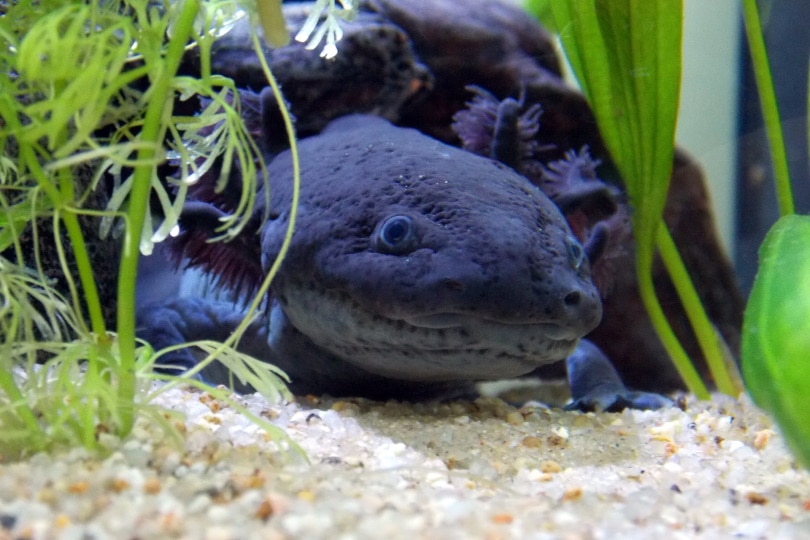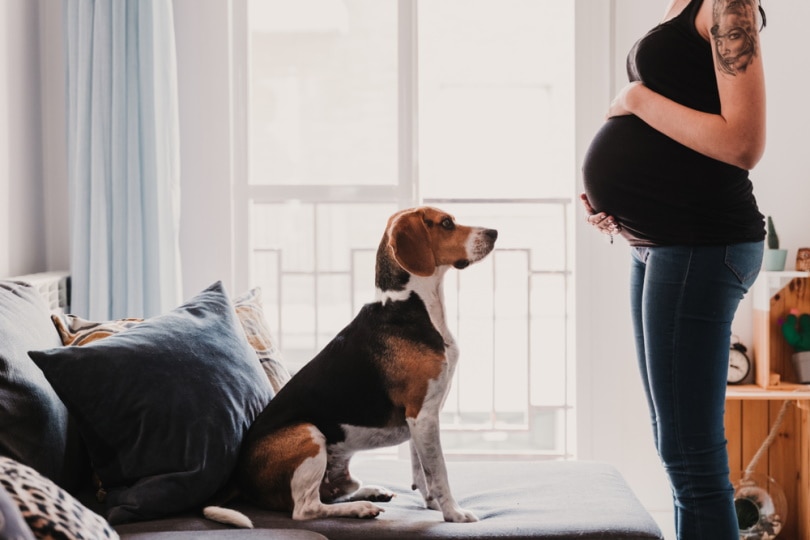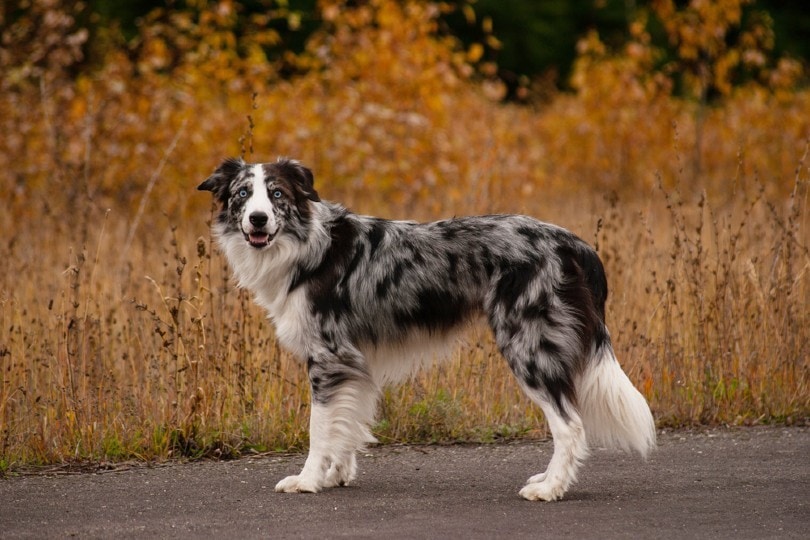
If you’re considering keeping an axolotl as a pet, then you probably already know a little bit about this interesting creature. For example, the axolotl is native to swampy waters and canals in Lake Xochimilco in Mexico City. These animals are carnivores and will eat any small animal that they can fit inside of their mouths.
Sadly, wild axolotls are on the edge of extinction, even while captive-bred axolotls are growing in popularity in the aquarium trade. If you become a pet owner of one of these critters, you need to make sure you take care of it the proper way and feed it the right diet to keep it healthy and happy. It’s important to note that axolotls that are raised in captivity should be fed basically the same diet as those in the wild, mostly insects and small animals. In this article, you’ll find out precisely what axolotls eat in the wild and what you should feed yours as a pet as well.
What Do Axolotls Eat in the Wild?

The swampy waters of Lake Xochimilco offer the axolotl a host of creatures to feast upon when they’re hungry. Some of those animals include crickets, insects, mosquito larvae, slugs, worms, snails, small crustaceans, frog tadpoles, small fish, other small salamanders, and even small animals that frequent the lake.
The rudimentary teeth of the axolotl help them to clamp down on their prey, but they can’t chew it or tear it, so don’t worry when you can’t see your axolotl chewing his food. Your axolotl instead feeds by sucking water into his mouth along with his prey, then swallowing.
Since the axolotl can’t chew his food, the food he eats has to fit in his mouth and be able to be swallowed whole. Also, since wild axolotls are nocturnal, they do most of their hunting after dark and hide in the deep swampy waters during the day. So, don’t be surprised if your pet axolotl exhibits the same behavior in its tank at home. There are many food options for an axolotl in the wild, so one that is kept in captivity needs access to that same wide variety of rich food to remain healthy.
What to Feed Axolotls in Captivity
Since we already know what axolotls tend to eat in the wild, it’s a little easier to determine what type of diet they need to be fed in captivity. Nightcrawlers, also known as earthworms, are a highly nutritional, appetizing option for your pet axolotl. It’s essential, however, to purchase your nightcrawlers from a garden that is organically sourced instead of one where chemicals might have been used.
There are quite a few water-based foods that can be fed to your axolotl as well. These foods include blood worms, blackworms, brine shrimp, daphnia, and even tubifex. However, with water-based foods, you want to be very careful as they can carry parasites or infections from parasites that can easily be given to your axolotl when he eats them.
If available in your area, you can also feed the axolotl freeze-dried food. While this option doesn’t have as much nutritional value, it also doesn’t carry parasites or parasite infections, so you need to choose which option is the best for you and your pet.
While some owners feed their axolotls beef hearts, this option isn’t something the axolotl would be able to catch and eat in the wild. So it’s best to only give your pet a small portion of this food, and only on very rare occasions, just to be on the safe side.

How Often Should You Feed Your Axolotl?
Believe it or not, your axolotl doesn’t require a lot of feeding. In fact, one or two earthworms every other day are sufficient to keep him from being hungry and to keep him healthy. Adult axolotls can go up to 2 weeks without eating, though that’s not recommended.
However, if you have a baby axolotl, you need to feed him daily because he’s still developing and needs the nourishment and nutrients to grow to adulthood. It’s just as important not to overfeed your axolotl as it is to make sure you feed them the proper foods. Overfeeding can lead to constipation and obstruction issues with your pet.
This concludes our guide on what axolotls eat in the wild and when they are pets. Remember, never overfeed your Axolotl, and make sure to take care of him the best way you can so you both can enjoy your time together.
- Related Read: How Much Do Axolotls Cost? Price Guide
Featured Image Credit: Poring Studio, Shutterstock








